I am looking at the fjord
There is salmon in the sea
My baby says she’s bored
She is not in love with me
Before visiting Norway, we watched Conan O’Brien’s new travel show, Conan Must Go, where Conan travels the world to meet his fans. In the first episode of this HBO show, Conan goes to Norway to meet a fan from Bergen, a member of the Norwegian rap music group, E.D.A. Together, they recorded the song that became an unofficial soundtrack of our Norway trip. We sang it almost everywhere we went. Conan’s Norway itinerary looked suspiciously like ours, with him starting in Bergen, going to the fjords, and finishing on the Lofoten Islands. I promise we did not copy his itinerary; it just organically fell in place like that.
As our fjord cruise was coming to an end and our boat was squeezing between tall mountains through the narrowest point of the fjord, I was murmuring this stupid, catchy song. There was yet another stop we had planned that Conan visited as well - Gudvangen’s Viking Village, on the bank of a picturesque UNESCO-recognized Nærøyfjorden. This is a place that claims to be a community of people who live as the Vikings did a thousand years ago. In the show, the village looked a bit like a Renaissance Fair, with actors dressed in wool and linen garments, cooking in iron cauldrons over an open fire, and generally pretending to live full-time in this village. At least I presumed they were actors; I have trust issues when it comes to “reality TV”.
Once we arrived at the village, it immediately became clear that I was wrong. All the same people who appeared in Conan’s show were still here, dressed in the same clothes, with real dirt on their leather handmade shoes, tending to chickens, forging iron weapons, making jewelry, and sewing clothes. The whole thing felt a little like “The Truman Show”. Wait, do they know it’s no longer 1024? Do they know the world saw them on TV? There was only one way to find out. So, we took a tour around the village, led by a friendly young Viking, one of the many familiar faces from the show.
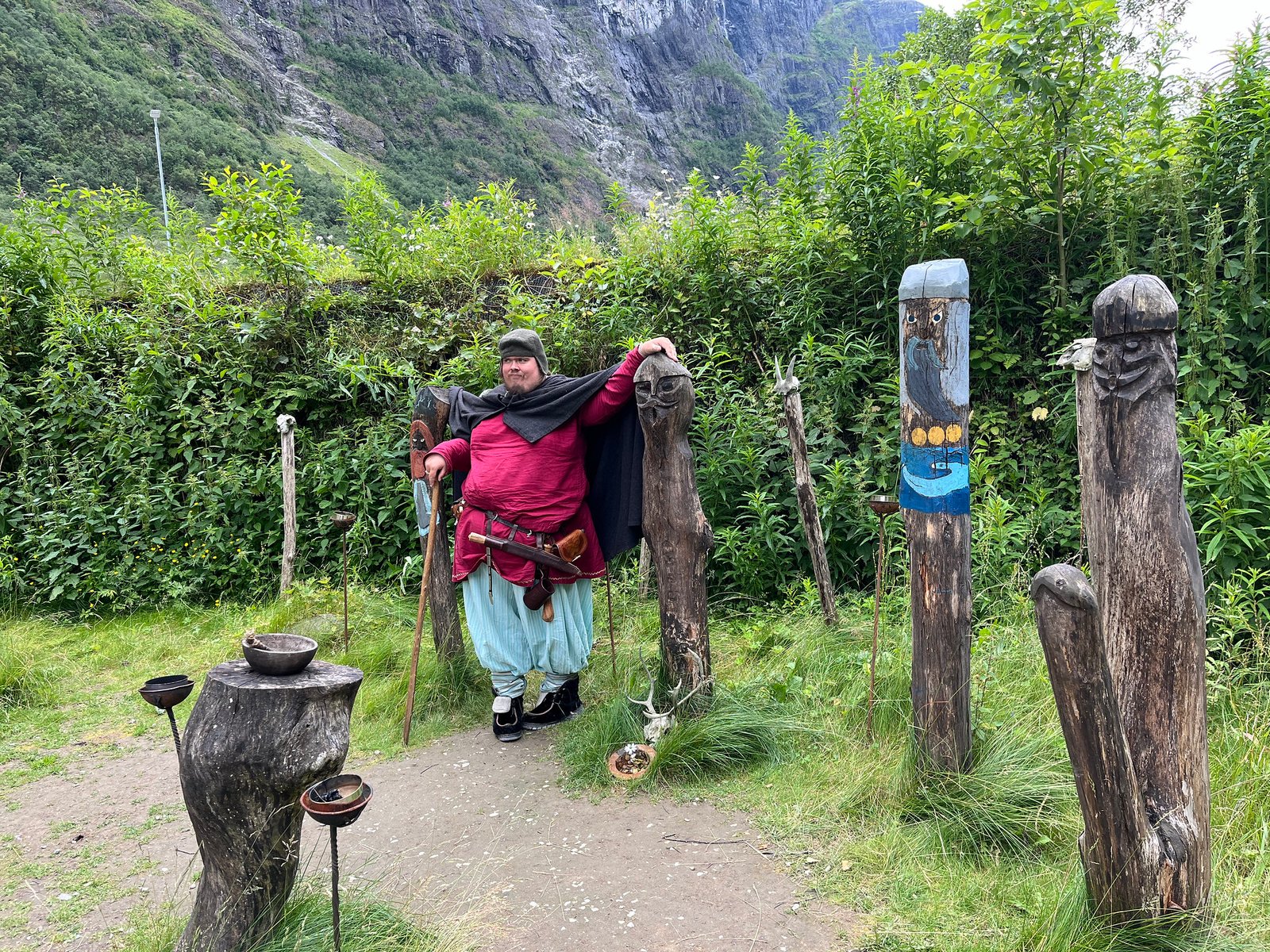
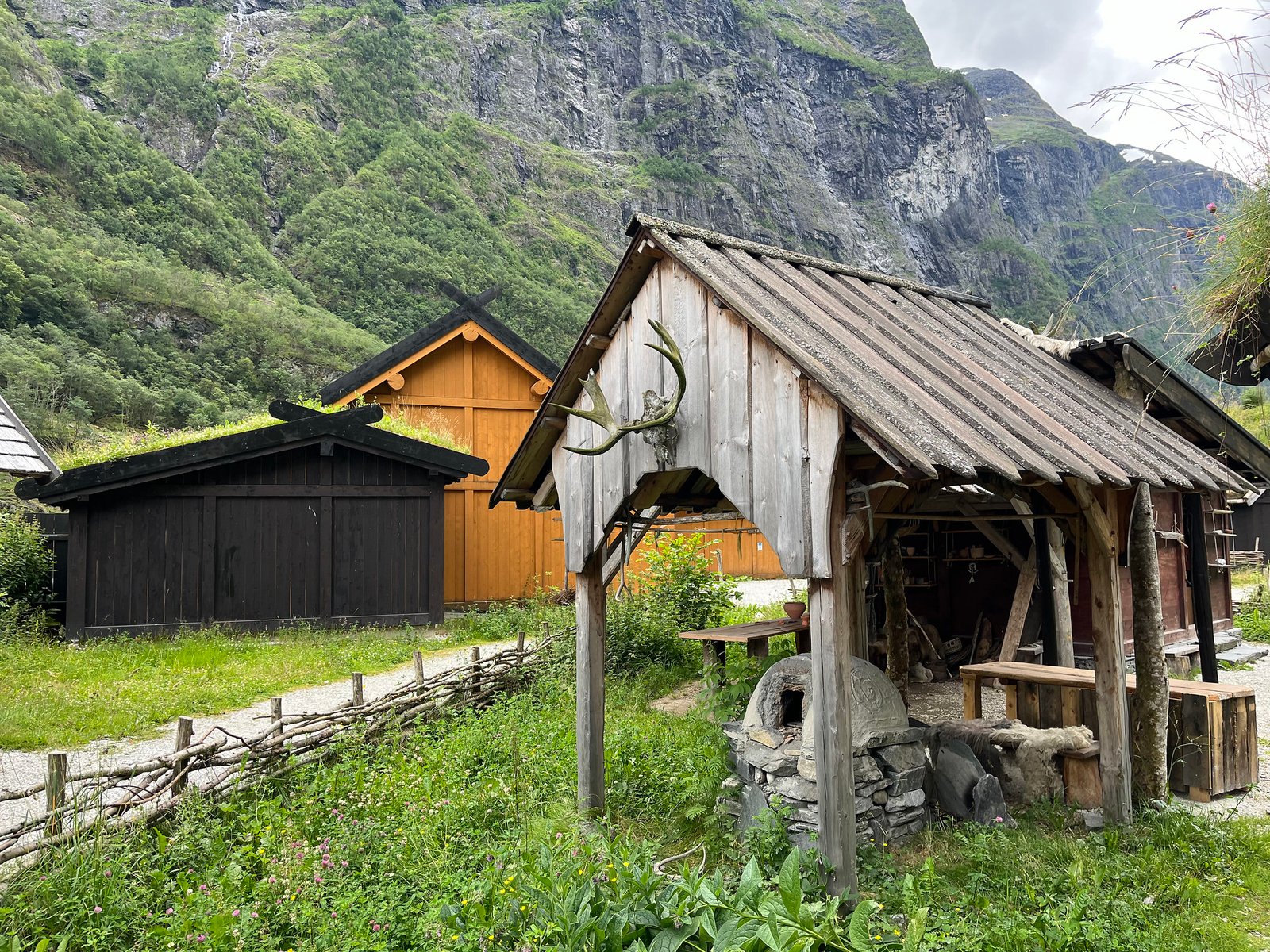
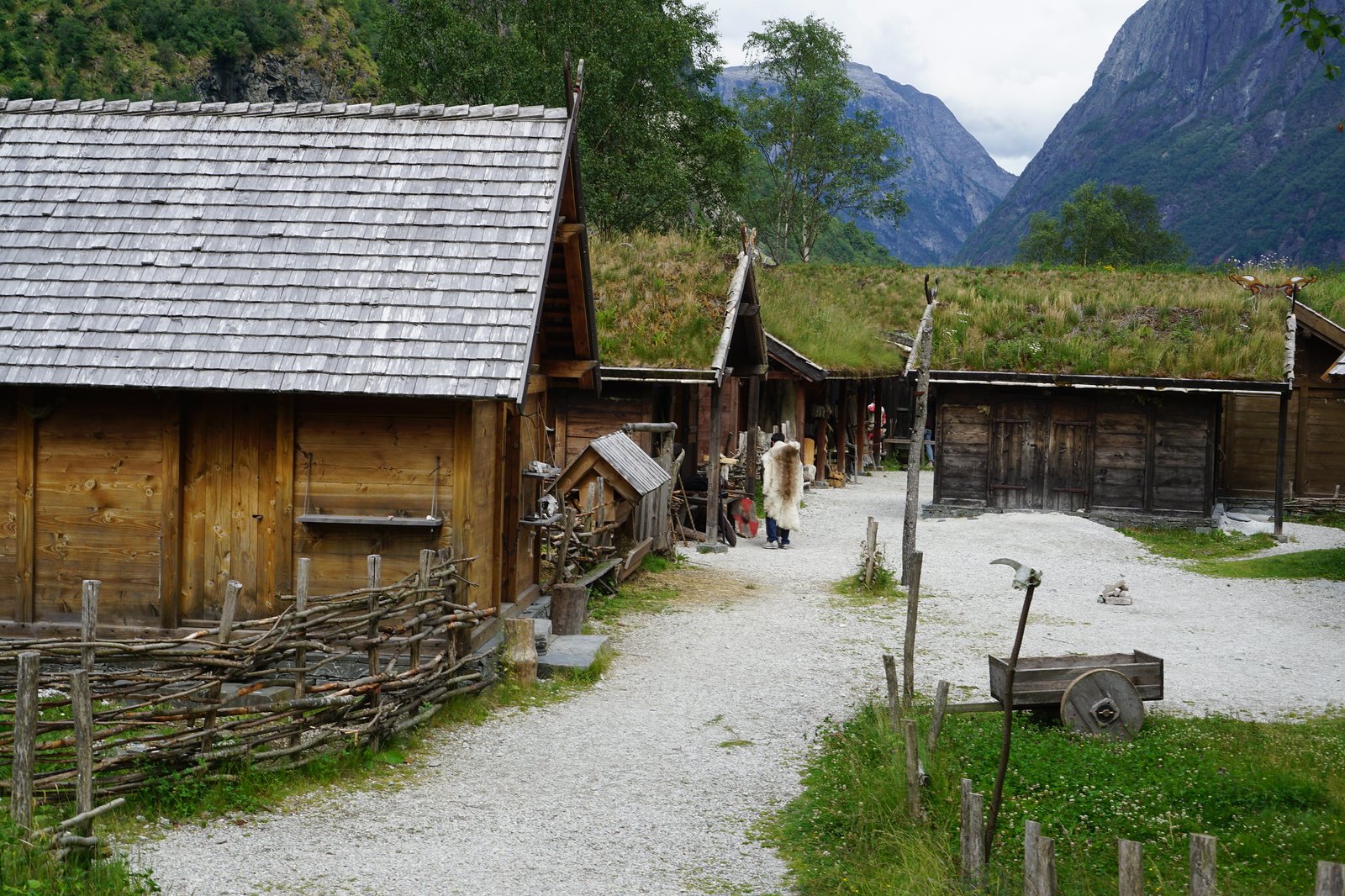
Honestly, learning about activities and customs of the Viking Age was just as fun as learning about the current occupants of the settlement. It takes a special person to give up all the comforts of modern civilization such as electricity, running water, and Internet to rise at dawn and spend all day performing chores while the tourists gawk at you. Some, like our guide, are experts in Viking history, archaeology, and Norse culture. Others are skilled craftsmen and artisans who replicate Viking-age tools, clothing, and weapons. Some reenactors showcase Viking skills like sword fighting and archery and teach them to visitors. We made sure to do some axe-throwing, archery, and even dressed up in Viking furs and helmets and swung some very heavy swords around. My favorite part of the tour was learning how Viking clothing was made, from shearing the sheep to spinning fibers into threads, spinning the yarn and weaving it into cloth, and all the natural dyes from plants and minerals that were foraged and imported to color the clothing. I was surprised to learn that the most expensive dye was Indigo because it was traded from the Mediterranean region and could be used to produce a rich purple color and could only be afforded by the very rich in Viking society. Suddenly, the Minnesota Vikings NFL team wearing purple started to make more sense.
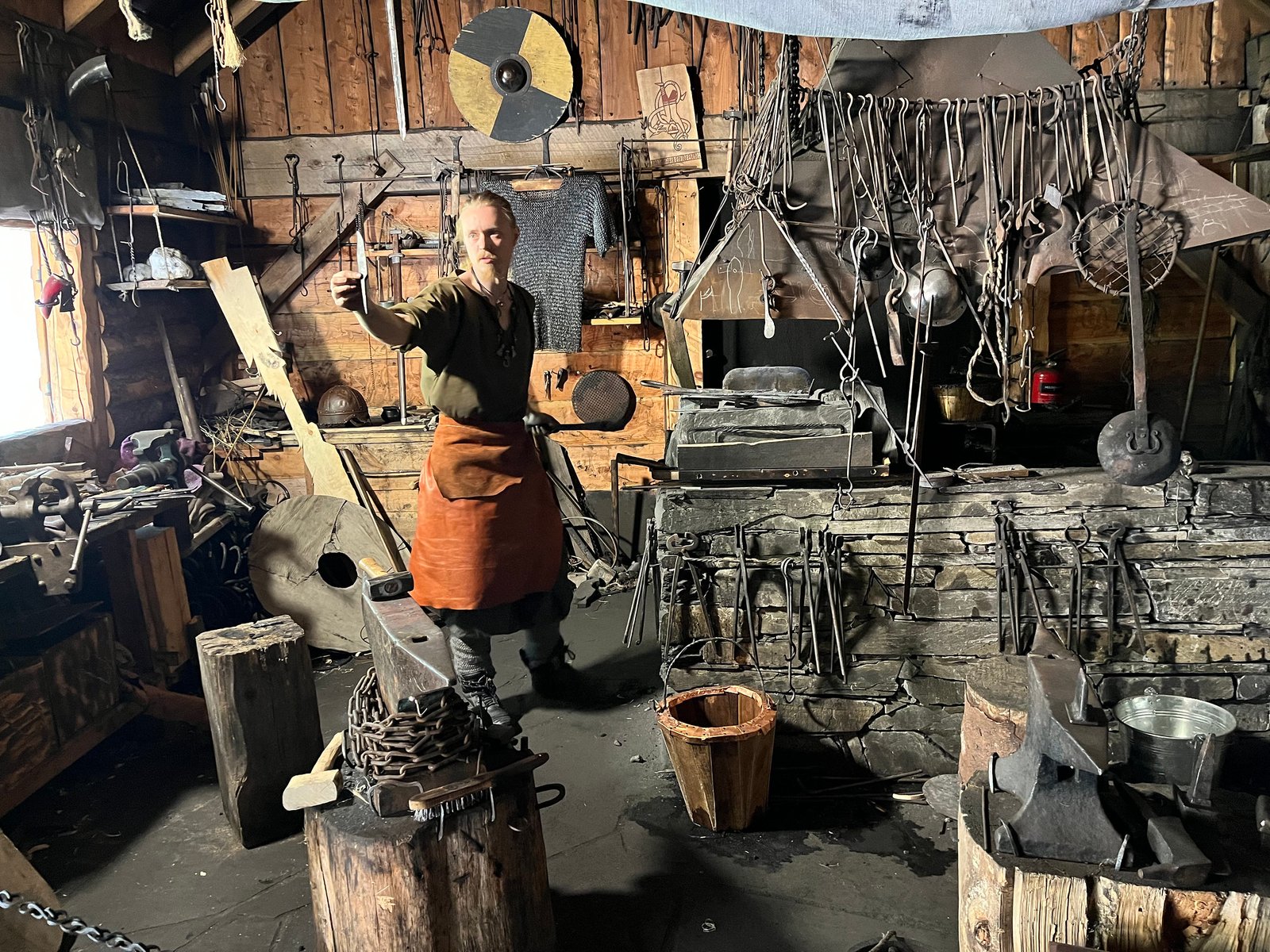
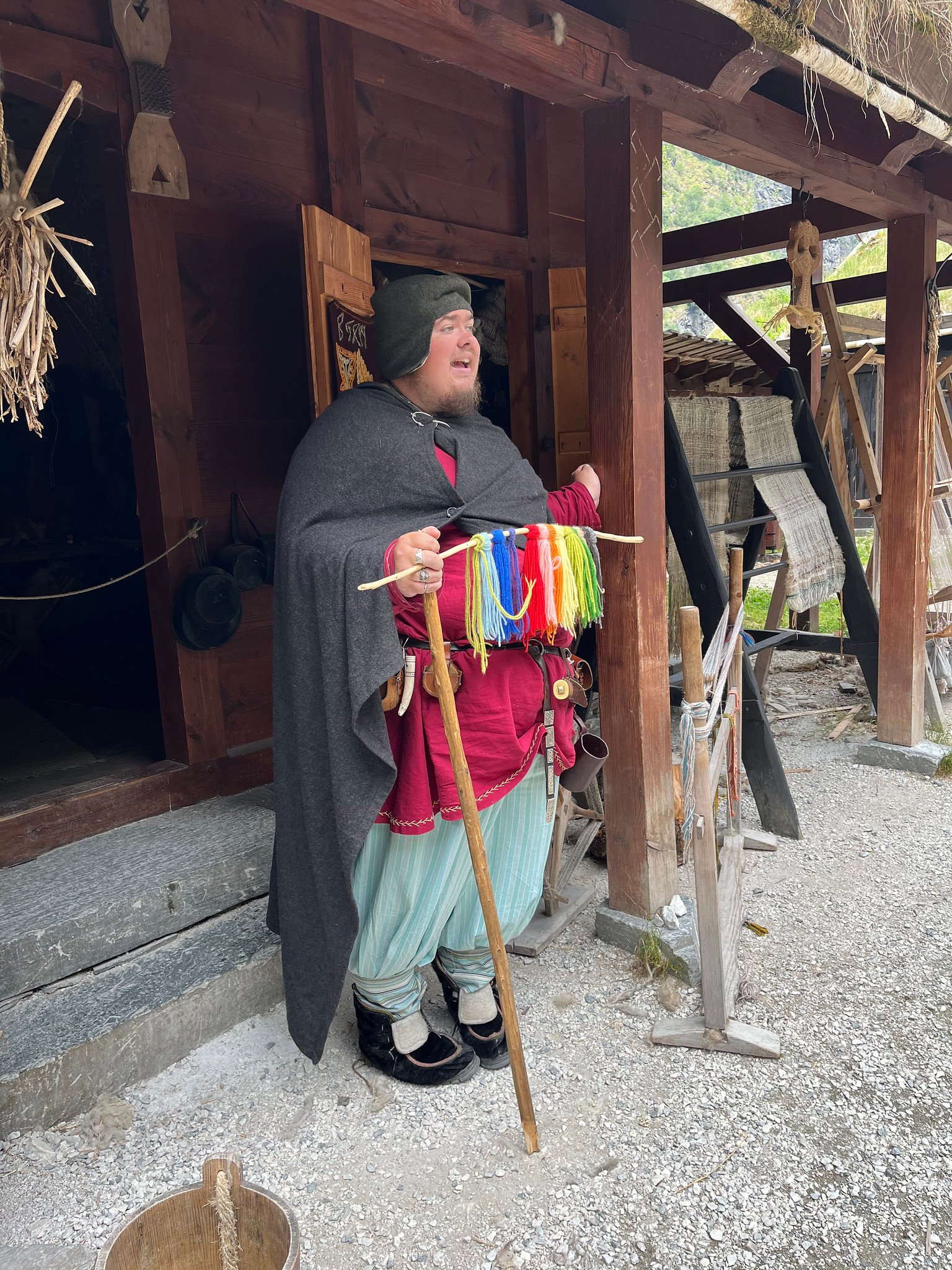
A week later, on our first day at the Lofoten Islands, as we were driving towards our Airbnb, we passed by a large building, advertising itself as “Loftr Viking Museum”. Having already spent a day at the Viking village, we really didn’t think we needed to learn anything more about Vikings (or people currently pretending to be Vikings). Five days later, our joints and muscles aching from non-stop hiking, we decided to take a half-day break and visit the museum after all. We expected exhibits, descriptions of archeological finds, maybe a short movie, and a lot of benches for us to rest on. What we found was an interactive experience with a massive Chieftan’s Longhouse to explore, a Viking ship to sail, lunch cooked over an open fire to feast on, and more weapons training than we could handle. During a fascinating tour of the longhouse, a reconstructed building designed to mirror the structure that was uncovered on the same spot by archeologists, we listened to stories of Viking society, tried on itchy wool clothing, sat on the chieftain’s throne chair, and even enjoyed a stew cooked over an open fire.
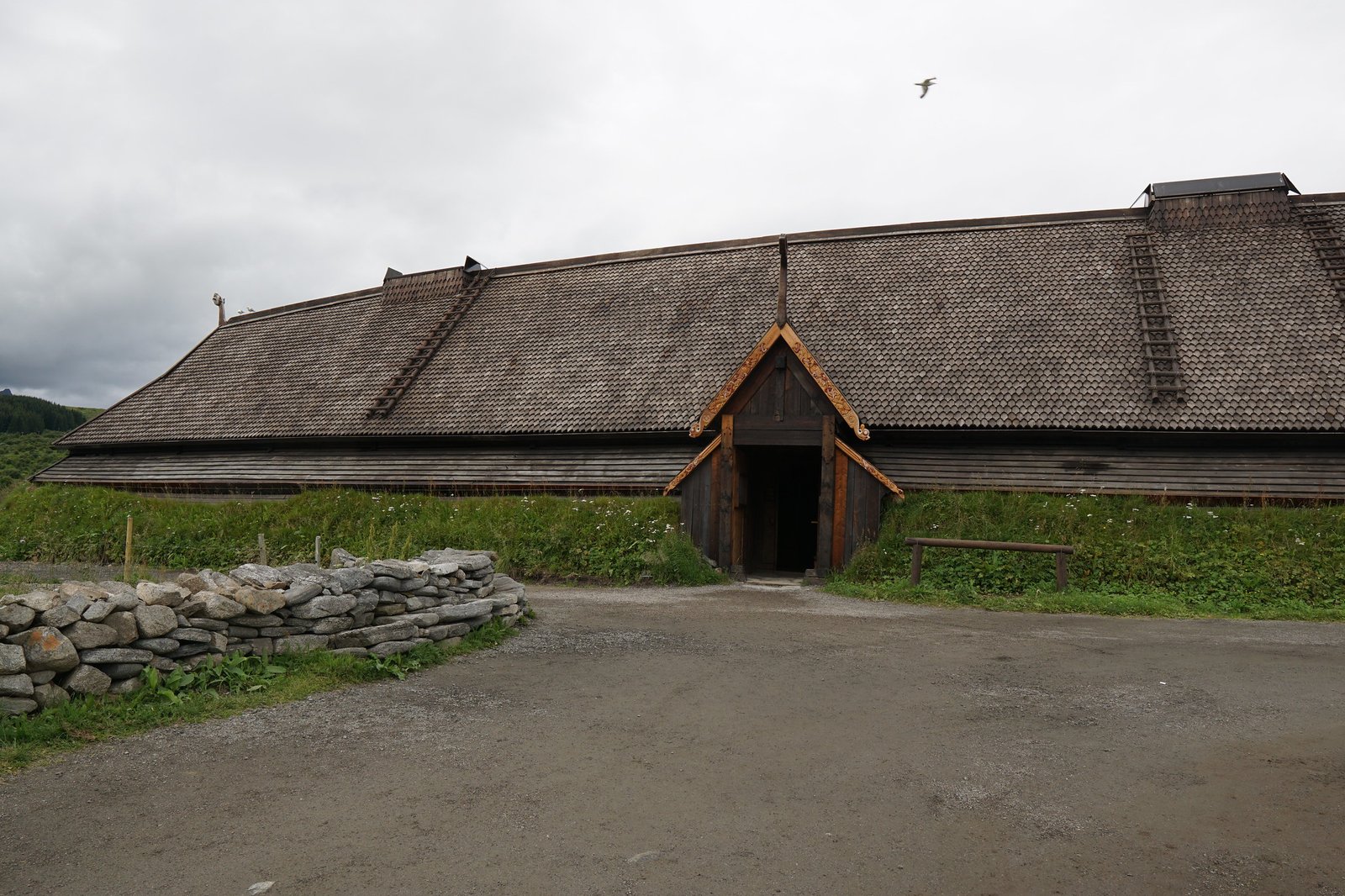

After lunch, we decided that the best place to relax would be on a reconstructed Viking ship, sailing around a little lake, just a short walk from the museum. I imagined a fresh breeze in my hair, sails full of wind, and the intricately carved boat easily gliding on water. Turns out this was more of a “Vikings just raided your land, kidnapped you, and now you are a slave frantically rowing their boat full of loot while the helmsman is shouting commands at you” experience. Once all the tourists realized that we would all have to row ourselves around the lake, there was a bit of grumbling on the boat.
“How many times has this boat capsized?” I asked, trying to lighten the mood.
“Only once!” the cheerful Viking girl answered. “Is everyone ready?”
This was not the answer I expected. But once the Viking in charge explained that all the guides had a bet going as to who could achieve the fastest rowing speed with their tourist groups (as measured by a GPS speedometer), my competitive spirit took over. I rowed so hard, I ended up with blisters on my hands and even scraped my pinky bloody. Don’t get me wrong, we loved it, even though it took a while to figure out the oar positioning, get into the rowing rhythm, and coordinate our oars with other kidnapped slaves, aka tourists. We walked off the boat sweaty, tired, and thrilled to have won the competition.
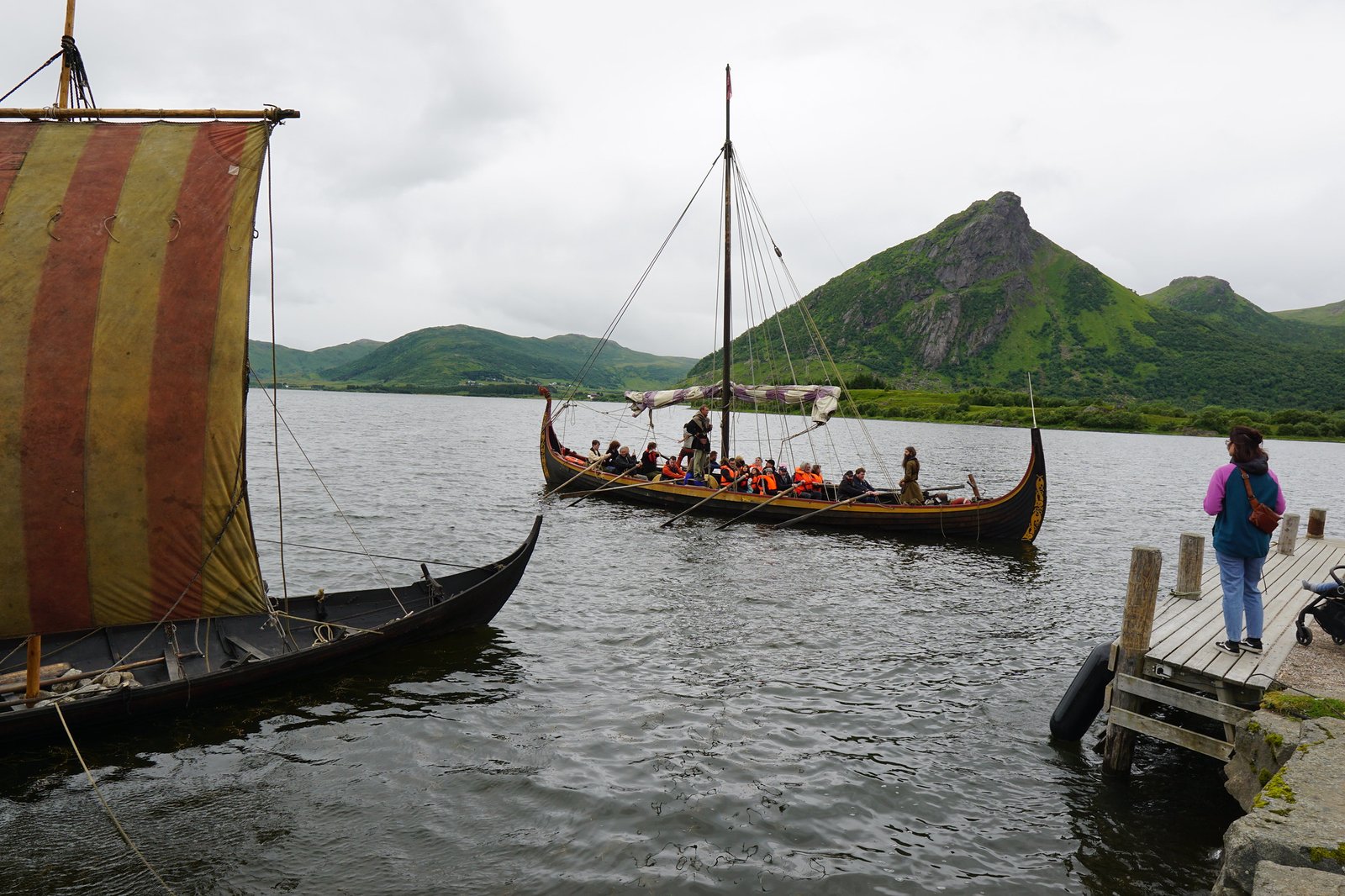
Back at our Airbnb, our host filled in some interesting details for us concerning this museum. Turns out, twenty years ago, he was one of the builders who worked on constructing both the longhouse and the longboat. The first time they built the longhouse, the wind lifted the roof and blew it off. One of the first times the boat was tested on the water, the sails overfilled with wind, and it capsized. Apparently, the traditional Viking building methods of both the house and boat have been lost to history, and the initial attempts at recreation did not go well. The longhouse had to be rebuilt using some modern materials to avoid the roof collapsing, and the boat is now being used without raising the sails.
“We have many museums and villages, and archeological findings about Vikings,” he said. “But there is still so much we don’t know.”
All I know is that I would not make a good Viking – not in the recreated Viking village in 2024, not in the real one in 1024. I get blisters too easily, and my pinky was still sore days later.

